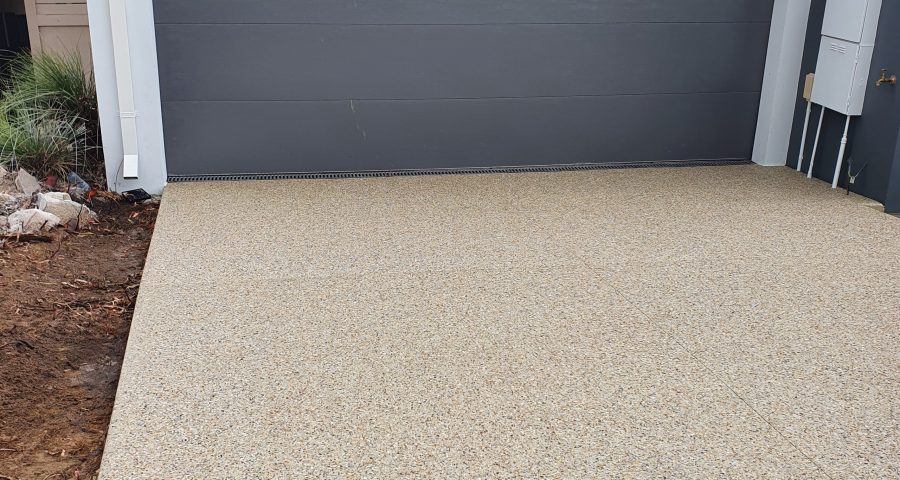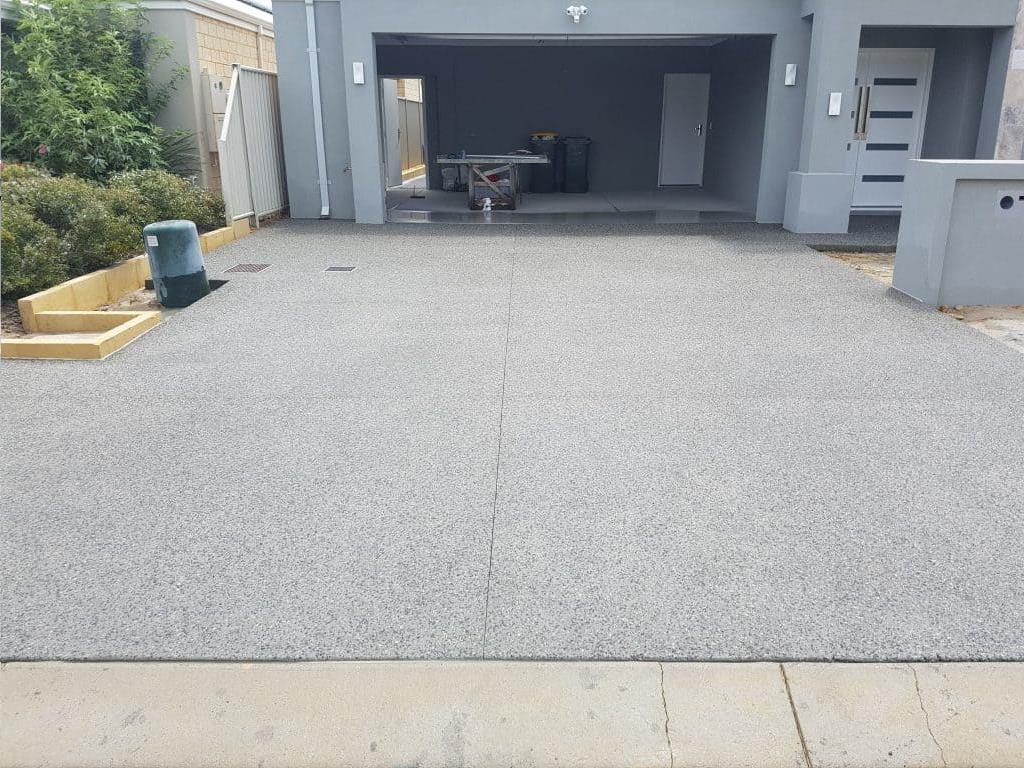
Concrete driveway installation is a meticulous process that requires expertise and precision. As an experienced concrete contractor in Geelong, I’ve overseen numerous residential and commercial projects, ensuring each one meets the highest standards.
Let’s delve into the detailed steps involved in concrete driveway installation, ensuring a durable and attractive addition to your property.
Table of Contents
- Introduction to Concrete Driveway Installation
- Site Preparation
- Excavation
- Sub-base Installation
- Formwork and Reinforcement
- Concrete Mixing and Pouring
- Curing the Concrete
- Sealing and Finishing Touches
- Why Choose Us
- FAQs

Introduction to Concrete Driveway Installation
Concrete driveway installation is a crucial task that, when done correctly, can significantly enhance the value and aesthetics of your property. Whether you’re considering it for your home or business, understanding the process can help ensure you achieve a long lasting and visually appealing driveway.
Site Preparation
The first step in concrete driveway installation is thorough site preparation. This involves ensuring the ground is stable and free of obstructions to create a solid foundation for the driveway.
Clearing the Area:
All vegetation, debris, and existing structures must be removed to provide a clean and stable base for the driveway.
Example: Removing tree roots that could later cause cracks or lifting in the driveway.Assessing Soil Conditions:
The soil should be inspected to determine its stability. Soft or loose soil must be compacted or replaced to prevent settling.
Example: If the soil is sandy or clay-heavy, additional reinforcement such as gravel may be required.Marking the Layout:
Example: Using wooden stakes and string lines to outline the area.
Clearly marking the driveway’s dimensions ensures precise installation and avoids encroaching on other property sections.
Excavation
Once the site is prepared, excavation is necessary to achieve the correct depth for the driveway base.
Determining Excavation Depth:
The depth of excavation depends on soil conditions and expected vehicle load.
Example: A residential driveway typically requires a depth of 150mm to 200mm, while commercial driveways may need 250mm or more.Ensuring Proper Drainage:
The driveway should have a slight slope to allow water runoff and prevent pooling.
Example: A gradient of at least 1% (10mm per metre) to direct water away from the house.Using Machinery for Efficiency:
Excavators or skid-steer loaders can be used to dig efficiently and remove excess soil.
Example: A mini-excavator may be used for small residential driveways, while a larger excavator is needed for extensive commercial projects.
Sub-base Installation
A well-installed sub-base enhances the strength and durability of the driveway.
Choosing the Right Material:
The sub-base typically consists of compacted gravel or crushed stone to provide stability and drainage.
Example: Crushed rock (such as road base) is commonly used to prevent shifting over time.Compacting the Sub-base:
Each layer of material should be compacted using a vibrating plate compactor.
Example: Compacting in 50mm layers ensures uniform density and reduces the risk of sinking.Ensuring Even Thickness:
The sub-base should be at least 100mm thick to support the concrete properly.
Example: A driveway in an area with heavy rainfall may require a thicker sub-base for better water drainage.
Formwork and Reinforcement
Formwork and reinforcement are essential for defining the driveway shape and improving its structural integrity.
Setting Up Formwork:
Wooden or metal boards are placed around the perimeter to contain the concrete.
Example: Plywood or steel formwork may be used depending on the required strength and reusability.Adding Reinforcement:
Steel mesh or rebar enhances the driveway’s strength and prevents cracks.
Example: A driveway expected to support heavy vehicles may require rebar spaced at 200mm intervals for additional reinforcement.Ensuring Proper Alignment:
The formwork should be straight and level to prevent uneven edges.
Example: Using a spirit level and bracing the formwork with stakes to maintain accuracy.
Concrete Mixing and Pouring
Mixing and pouring the concrete correctly is critical for durability and long-term performance.
Choosing the Right Concrete Mix:
A standard mix for driveways consists of cement, water, sand, and aggregate with a strength rating of at least 25 MPa.
Example: A higher-strength mix (e.g., 32 MPa) may be used for commercial driveways or steep inclines.Pouring the Concrete Efficiently:
The concrete should be poured in one continuous session to avoid cold joints.
Example: Using a concrete pump for large driveways to ensure an even pour.Screeding and Levelling:
The surface is smoothed with screeding tools to remove excess concrete and create an even finish.
Example: A bull float can be used to smooth the surface before final finishing.
Curing the Concrete
Proper curing ensures that the concrete gains strength and durability over time.
Keeping the Concrete Moist:
Preventing premature drying reduces the risk of cracks.
Example: Covering the concrete with plastic sheeting or regularly misting it with water.Allowing Sufficient Curing Time:
The concrete should cure for at least seven days before supporting heavy loads.
Example: Avoiding vehicle traffic for a minimum of seven days to allow the driveway to harden properly.Using Curing Compounds if Necessary:
A curing compound can be applied to retain moisture and ensure even curing.
Example: Spraying a liquid curing compound to reduce water loss in hot climates.
Sealing and Finishing Touches
Final steps enhance the appearance and longevity of the driveway.
Applying a Sealant:
A sealant protects against moisture, stains, and wear.
Example: Using a solvent-based sealer for a glossy finish or a penetrating sealer for a natural look.Adding Decorative Features:
Colouring, stamping, or texturing can be applied for aesthetic appeal.
Example: Exposed aggregate finishes for a textured, non-slip surface.Ensuring Proper Maintenance:
Routine maintenance extends the driveway’s lifespan.
Example: Resealing every two to three years to maintain durability and appearance.

Why Choose Us
Choosing the right contractor for your concrete driveway installation is crucial.
Here are five reasons to choose our services:
- Experience: With years of experience in both residential and commercial projects, we have the expertise to deliver quality results.
- Quality Materials: We use only the highest quality materials to ensure durability and longevity.
- Attention to Detail: Our meticulous approach ensures every aspect of the installation is done to the highest standard.
- Customer Satisfaction: We prioritise our clients’ needs and ensure complete satisfaction with the finished product.
- Competitive Pricing: We offer competitive rates without compromising on quality.
Contact our concreting team today to discuss your concrete driveway installation project or request a free quote. We’re here to help you every step of the way.
FAQs
The average lifespan of a concrete driveway typically ranges between 25 and 50 years, making it a long-lasting and durable choice for homeowners. The longevity of the driveway depends on several factors, including the quality of the concrete mix, proper installation, and how well it is maintained over time. Harsh weather conditions, heavy vehicle traffic, and exposure to chemicals or de-icing salts can impact its lifespan, but with the right care, concrete driveways can last for decades without significant deterioration. Regular maintenance, such as sealing and repairing cracks, helps protect the surface and extend its durability. Choosing a professional and experienced contractor for installation also plays a crucial role in ensuring a strong and long-lasting driveway.
The installation process for a concrete driveway generally takes between three and seven days, but the curing process continues for several weeks. The timeframe depends on factors such as site preparation, weather conditions, and the size of the driveway. Proper preparation, including excavation, compaction of the base, and reinforcement placement, ensures a strong foundation and can add extra time to the process. Once the concrete is poured, it usually needs at least 24 to 48 hours to set before walking on it, while vehicles should wait at least a week before driving over it. However, full curing takes around 28 days, after which the concrete reaches its maximum strength, ensuring long-term durability.
Maintaining a concrete driveway is relatively simple but essential to keep it in the best possible condition for years to come. Routine maintenance includes sweeping or washing the surface to remove dirt and debris, preventing the buildup of stains and mould. Sealing the concrete every two to five years helps protect against water penetration, stains, and surface damage caused by weather or chemicals. Any cracks or minor damage should be repaired promptly to prevent them from spreading and weakening the structure. It is also advisable to avoid using de-icing salts in winter, as they can cause surface deterioration and reduce the lifespan of the driveway.
Yes, adding decorative finishes to a concrete driveway is a fantastic way to enhance its appearance and add a personalised touch. Homeowners can choose from a variety of options, including exposed aggregate, coloured concrete, stamped patterns, or even polished concrete for a sleek finish. Exposed aggregate is a popular choice as it combines durability with a textured, stylish look by revealing the natural stones within the concrete. Stamped concrete can mimic the appearance of bricks, tiles, or stone pavers while offering the strength of concrete. Coloured concrete is another great option, allowing for a range of shades that can complement your home’s exterior. These decorative options not only improve aesthetics but can also enhance slip resistance and increase the value of your property.
The cost of installing a concrete driveway varies depending on multiple factors, and it is always best to obtain several quotes from professionals to get an accurate estimate. The size of the driveway is a major factor, as a larger surface area will naturally increase the amount of materials and labour required. The type of concrete and any decorative finishes, such as exposed aggregate or stamped patterns, can also add to the cost. Site preparation, including excavation, grading, and the addition of a stable base, can impact pricing if extensive groundwork is needed. Reinforcement materials, such as steel mesh or rebar, may be necessary for additional strength, particularly for driveways that need to support heavier vehicles. Additionally, labour costs and local material prices can influence the overall budget, so it is important to factor in all these elements when planning a new driveway.
The thickness of a concrete driveway is a crucial factor in ensuring its strength and longevity. For standard residential use, a minimum thickness of 100mm (10cm) is recommended, which is suitable for cars and light vehicles. However, if the driveway will need to support heavier loads, such as trucks, caravans, or boats, a thickness of 125mm to 150mm (12.5cm to 15cm) is advisable. Reinforcement, such as steel mesh or rebar, can help improve the structural integrity and prevent cracking over time. The quality of the sub-base is also important, as a well-compacted base layer provides additional support and prevents sinking or shifting. Ensuring the correct thickness and reinforcement during installation is essential for a durable and long-lasting driveway.
Sealing a concrete driveway is highly recommended as it provides long-term protection against moisture, stains, and surface deterioration. A good quality sealer helps prevent water absorption, reducing the risk of cracks and damage caused by freeze-thaw cycles in colder climates. It also protects against oil spills, grease stains, and UV exposure, which can cause the concrete to discolour over time. Sealing the driveway every two to five years, depending on the level of use and weather conditions, helps maintain its appearance and durability. The process is relatively simple and involves cleaning the surface thoroughly before applying the sealer with a roller or sprayer. Regular sealing ensures your driveway remains strong, attractive, and resistant to wear for many years.

